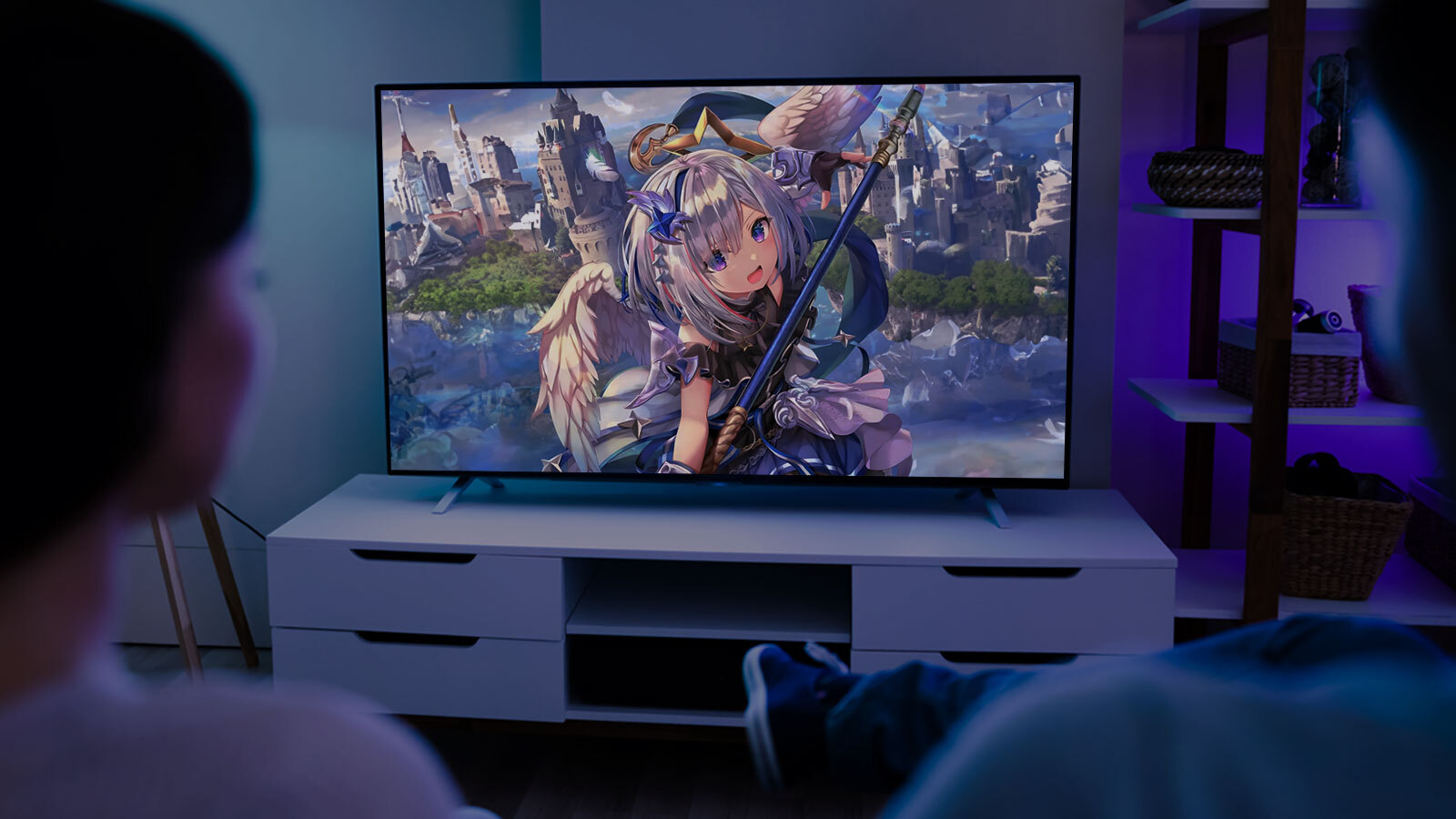One of the Largest Streaming Audiences Is Hiding in Plain Sight

In December of 2023, Digital Trends published an article outlining the 10 U.S. streaming services with the largest volume of subscribers.
The usual suspects are there. But what’s missing is the estimated 52.8 million North American viewers watching anime on Crunchyroll. That number, which is derived from Crunchyroll’s publicly-stated global viewership numbers (120 million) and the percentage of its audience that’s in North America (44%), would put it ahead of streaming heavyweights like Hulu, Peacock, and AppleTV+.
It’s worth noting that Crunchyroll isn’t the only anime game in town. But it is the largest player, and it serves as a useful barometer for the enormous and continually rising popularity of anime in 2024. Survey after survey backs it up: 42% of Gen Z respondents to a survey in January say they watch anime at least weekly. That’s significantly more than the 25% who say they watch the NFL.
And not only is Crunchyroll completely missing from this list of major streaming publishers, but somehow anime in general is remaining under the radar of a lot of advertisers. McDonalds’ anime-inspired “WcDonalds” campaign in February made waves for just how unique it was in targeting anime audiences.
All of this leaves us with the question of: How on earth could an audience this big be hiding in plain sight?
The Demographic Gap
This is probably a twofold problem:
- The people calling the shots in the ad industry – the managers and executives – grew up in a storytelling culture where anime was largely absent.
- As a result, the perception of value of stories from this kind of storytelling tradition is likely quite different between generations.
Here’s what this means: An analysis of anime viewership shows decreasing viewership with increased age. GenX and beyond (who are on average between the ages of 44-60 at the time of this writing) show massive drops in viewership. Adult anime fans in the U.S. in 2022, according to Statista, were about 25% Gen-Z, 42% millennial – and then 21% Gen-X and 12% boomers.
Meaning that if you’re early Gen-X and beyond – anime just might not be on your radar. Leaders in advertising firms are, statistically, quite likely to be unaware of the spending power and raw numbers of those who spend their free time watching giant robots duke it out. Logically, then, their direction to their direct reports probably deprioritizes anime – or doesn’t even take it into account.
But age demographics aren’t the only factor. Anime audiences are also extraordinarily diverse. The same January survey by Polygon found that compared to the general population, anime audiences over index among both Black Americans and Asian Americans, as well as LGBTQ+ viewers. Meanwhile, an assessment of professional profiles of advertising executives in the U.S. found that they’re 71% white. These two factors together suggest that ad industry leadership – largely 40+, largely Caucasian – weren’t raised in a culture that embraced anime as typical and/or mainstream.
It’s worth taking a step back and noting that American audiences have only been truly receptive to Asian content and culture for a few decades, owing largely to longstanding and deep-seeded racism and bias. If you’re over 35 or so, you probably remember a time when sushi wasn’t mainstream. The juggernaut that is Pokemon, the most profitable media franchise of all time (more than Star Wars and Harry Potter combined), has only been around since the ‘90s. And from James Bond to M.A.S.H., classic Western entertainment content typically only included portrayals of Asian characters that were villainous at best and horrifically offensive at worst.
Getting past these kinds of biases is, obviously, the right thing to do. But it’s also where the money is.
What’s Different About Right Now?
The reason to pay attention to anime right now is that Netflix already is.
The largest streamer in the industry (247.15 million subscribers) has been investing in anime. Here are some clever moves that Netflix has made recently:
- They have a growing library of classic anime content from the last 40-50 years.
- More than half of their global base has watched at least one anime production. They are following the money.
- They’ve begun approaching anime via more Western-familiar names, often translating video game content into anime (Castlevania, a classic video game series, has released two critically popular shows. Cyberpunk: Edgerunners was a key part of the brand’s rehabilitation campaign in 2022).
- Netflix has also begun investing in live action remakes of popular anime, including popular classics Cowboy Bebop and One Piece.
- Finally, Netflix is starting to invest in its own original anime, including the recently released Pluto and Blue-Eyed Samurai.
It’s likely that these moves are predicated on two pillars. One, the price of production of premium content these days is staggering. Amazon’s recent Lord of the Rings show, after all, cost $465 million for season one. Typically, Netflix doesn’t open up its purse strings that much (with this exception of the $30MM per episode of risk-averse hit Stranger Things). Meanwhile, it’s more likely that a deep backlog of classic anime is much cheaper to acquire.
The second motivator for Netflix is probably that from 2008-2019, the entertainment industry was absolutely dominated by the Marvel Cinematic Universe (MCU) and a few other superhero franchises. But in a post-Endgame world, the MCU (and other Disney properties) haven’t been able to regain their former position of strength. You could even say they created a vacuum. The average American viewer has turned into someone who likes heroes defeating villains, magic, extra-human abilities, and so on. But Spider-Man fans don’t seem to be latching onto The Marvels or The Eternals. So then what happens?
That’s when viewers start taking out a flier on live-action Netflix anime content. Or video game-related anime content. And these become the entry points for decades of anime content on Netflix, just waiting for users to fall into a very, very slippery, very deep funnel.
And if the biggest streaming service is going all in on this genre, why wouldn’t we take advantage of that premium attention on other streaming platforms?
What Can Advertisers Do?
From an advertising perspective, anime viewership represents big numbers, big spending, and a young, diverse audience that any advertiser would be lucky to have. And as an industry, Asian-made media and products should be courted and respected as viable business strategies. Anime audiences are premium customers who deserve the respect of premium service and attention. It’s time.
Luckily, Infillion offers ad buys with major anime streamers like Crunchyroll and Funimation. And we would love to introduce you.
If you’d like to see your brand’s content paired with anime content, reach out today.
Brian Cullen is the Vice President of Strategy at Infillion. His favorite anime is Blue Lock, and he’s currently dabbling in Spy x Family.
Subscribe to our blog:
Related Posts:

The Hidden Costs of Opacity: How Fragmentation Bleeds Media Budgets
In the first part of this series, The Fragmentation Paradox, we showed how too many tools and fractured workflows grind teams down. This second chapter looks at something even more alarming: what all that fragmentation does to the money. The result isn’t just...

The Fragmentation Paradox: Why Media Teams Are Drowning in Tools, Tabs & Time Loss
If you ask people in advertising what their biggest challenge is right now, most won’t say identity. Or cookies. Or measurement. Or even AI. But at our roundtable with agency leaders this summer David Gaines from Mother Media put it very succinctly: “I was horrified...

Independent Agencies Are Rewriting the DSP Rulebook
For more than a decade, programmatic buying relied on systems that delivered automation and scale, but offered limited visibility into how decisions were made. But those constraints are now harder for agencies to justify. Independent agencies are no longer willing to...
Let's Connect

